Cory Wong: “The Stratocaster is exactly the way I want to sound... I pick it up, throw it in 4th position and I just feel at home“
With Wong's stunning signature Strat out today, we spoke to the prolific funk phenom about the design of his own “Hitmaker“ and asked why there is a hair-tie in the case
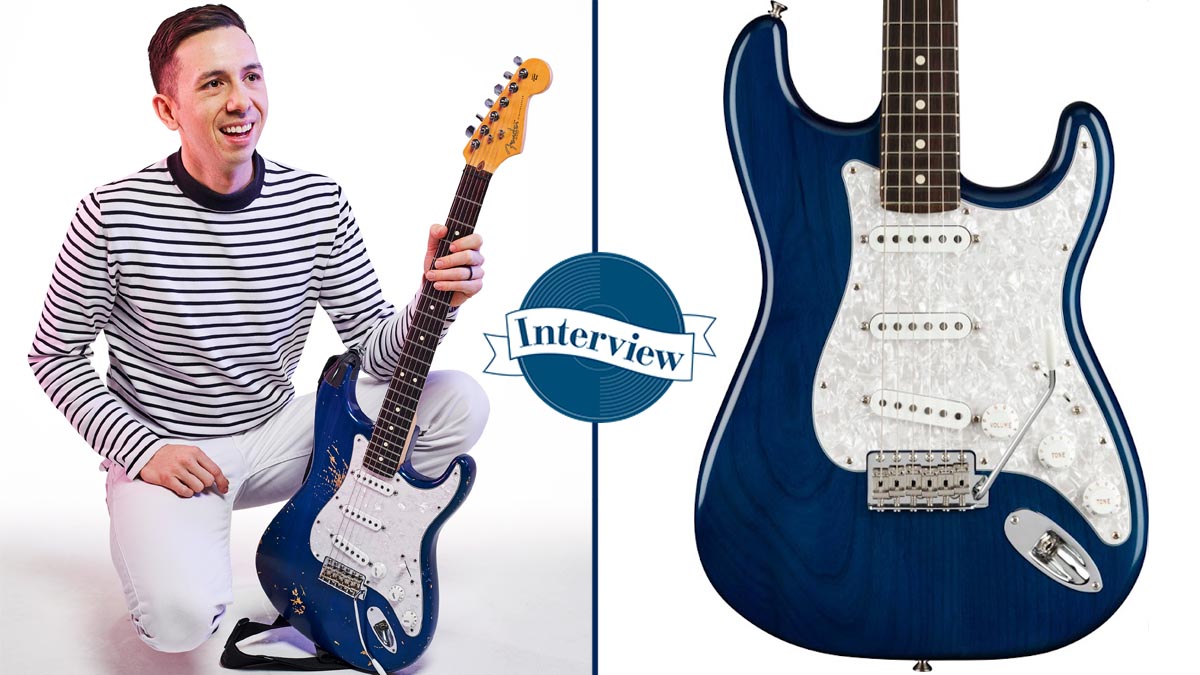
Today is the day that Fender releases the Cory Wong Signature Stratocaster into the wild. Finished in a transparent Sapphire Blue finish, showing off of the grain of its alder body, it is a special instrument, and one of the most interesting electric guitar designs we have seen in some time.
We could tell you all about the American Ultra Modern D-profile maple neck that's bolted on to a scaled-down alder body, about the locking tuners, the compound 10“-14“ radius rosewood fretboard with the rolled edges, and the Vintage-Style Synchronised tremolo.
But we thought it better to speak to the man himself and talk through some of the design choices that guided the project. Here, the prolific Vulfpeck guitarist explains how this Strat – which he considers to be his "Hitmaker" – evolved out of his beloved Highway One Strat and is the perfect instrument for funk, pop, RnB, and with the expanded range of his signature Seymour Duncan pickups, maybe a few other genres, too.
He talks about the scaled-down body profile and, crucially, what this means for the guitar's tone, and of course what exactly a hair-tie is doing in the case. Yes, 2021 might just be the year that the humble hair-tie becomes the must-have guitar accessory. And hey, it's not just a gimmick. It's all about the tone.
“That’s one of our little fun case candy things that people are always asking about,“ laughs Wong. “‘Really? Fender’s advertising that they put a hair-tie in it?’ Oh no, no, no! It’s got this purpose. It’s part of my sound.”
Cory, when we think of you, we think of the Stratocaster. Indeed, it's now difficult to picture you with anything else. What is it the Strat that works for you?
“The Stratocaster in general is such a versatile instrument. Objectively, it is a versatile instrument. No matter what kind of instrument you play, you are going to sound like yourself. When it comes to gear, there are certain pieces of gear that draw that thing out of you with no resistance – just the smoothest, most efficient flow of yourself and your sound drawn out of you through the instrument. To me, that’s a Stratocaster.
Want all the hottest music and gear news, reviews, deals, features and more, direct to your inbox? Sign up here.
I thought about doing a Jaguar or Jazzmaster thing, where there is like an up-down switch, but I thought I’d be a little more clever, so I got the idea of a panic button!
“I pick it up, I throw it in fourth position, and I just feel at home. I feel like the Stratocaster is exactly the way I want to sound, and what I want to say comes out. Now, of course, I can pick up a Telecaster and I will sound like me, but I am working things and I am negotiating things – where I am picking, where the tone knob is, which pickups I am using, what the amp settings are. I’ll sound like myself on a Telecaster and I love playing a Tele, but as far as my voice goes, what draws it out in the most efficient way is the Strat.
“The other side of that answer is, take a look at all the other Stratocaster players in history – Clapton, Hendrix, Stevie Ray Vaughan, Jeff Beck, John Mayer, John Frusciante, David Gilmour. There are so many incredible players, and then, I mean, you just go through RnB history and Nile Rodgers of course… There are so many different types of playing that you can do on a Stratocaster, and to me, it is the electric guitar.”
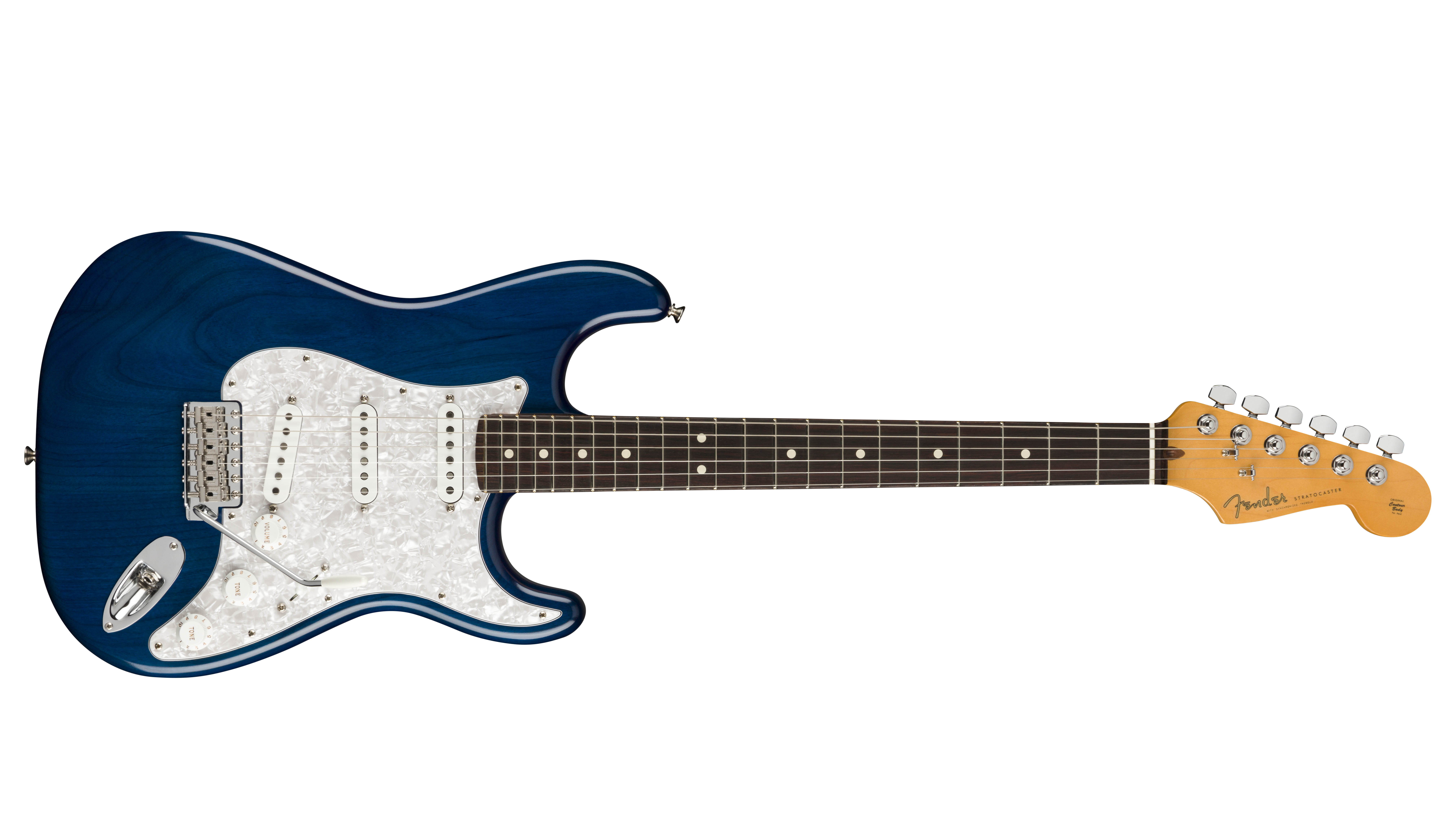
One of the many nice touches about this guitar is that it has this push-button feature on the tone control to access your favourite fourth position.
“Yes, that's one of the really fun things about this guitar! When I play rhythm guitar, when I do my thing, I have a pretty wide sweep. My wrists are very flexible, my [right] hand is moving really far. It’s part of my sweep. It’s part of my stroke. It’s part of my sound.
“Now, the only downside to that is, every once in a while, my fingers will hit the pickup selector, and since my sound is in the fourth position, I had an idea. First up, sometimes what I’ll do with my other guitar is put gaffer tape here so if I hit it it just can’t move. But I was thinking, ‘Is there a way I can hardwire something to make it stay in fourth position?’
“I thought about doing a Jaguar or Jazzmaster thing, where there is like an up-down switch, but I thought I’d be a little more clever, so I got the idea of a panic button! This tone control is a push-push knob, so any time when I feel like I might potentially hit it out, I have just got this button I can hit, and when it is up, no matter where the pickup selector is, it stays in fourth position.
“It is super fun, because now it is just wherever and I have got my sound and I don’t have to worry about whether I am going to hit it or not. And then, I can just hit it right back and the pickup selector is back in play. We really wanted to have an actual wiring thing that would just solve all of my problems.”
A panic button? Brilliant. I’ve played some venues where I’ve wished there was a panic button on the guitar, but it wouldn’t be the fourth position it’d be wired to.
“[Laughs] Is it to remove yourself or a specific audience member? Or the drummer? 'Replace the drummer!' [Presses button]”
It’s just so practical, which is typically Fender. Your Strat is described as having a scaled-down body but what proportion is it to a regular Strat? It’s not like a Dinky 7/8ths type thing?
“Oh, no no – it’s not that much smaller. If you look at Stratocasters over the course of history you are going to see an average body shape which, of course, just looks like this, and the difference in a lot of Stratocasters is the contours. Different ones have different contours, and some them have a little bit more wood, some are sanded a little bit more.
“Basically, what I did was take all of the ones where there was a little bit of a deeper contour and said, ‘Gimme that one!’ A deeper contour here, ‘Gimme that one!’ Well, I said it more politely than that. [Laughs] What I ended up with is a Strat that is probable three per cent smaller than a typical Strat.“
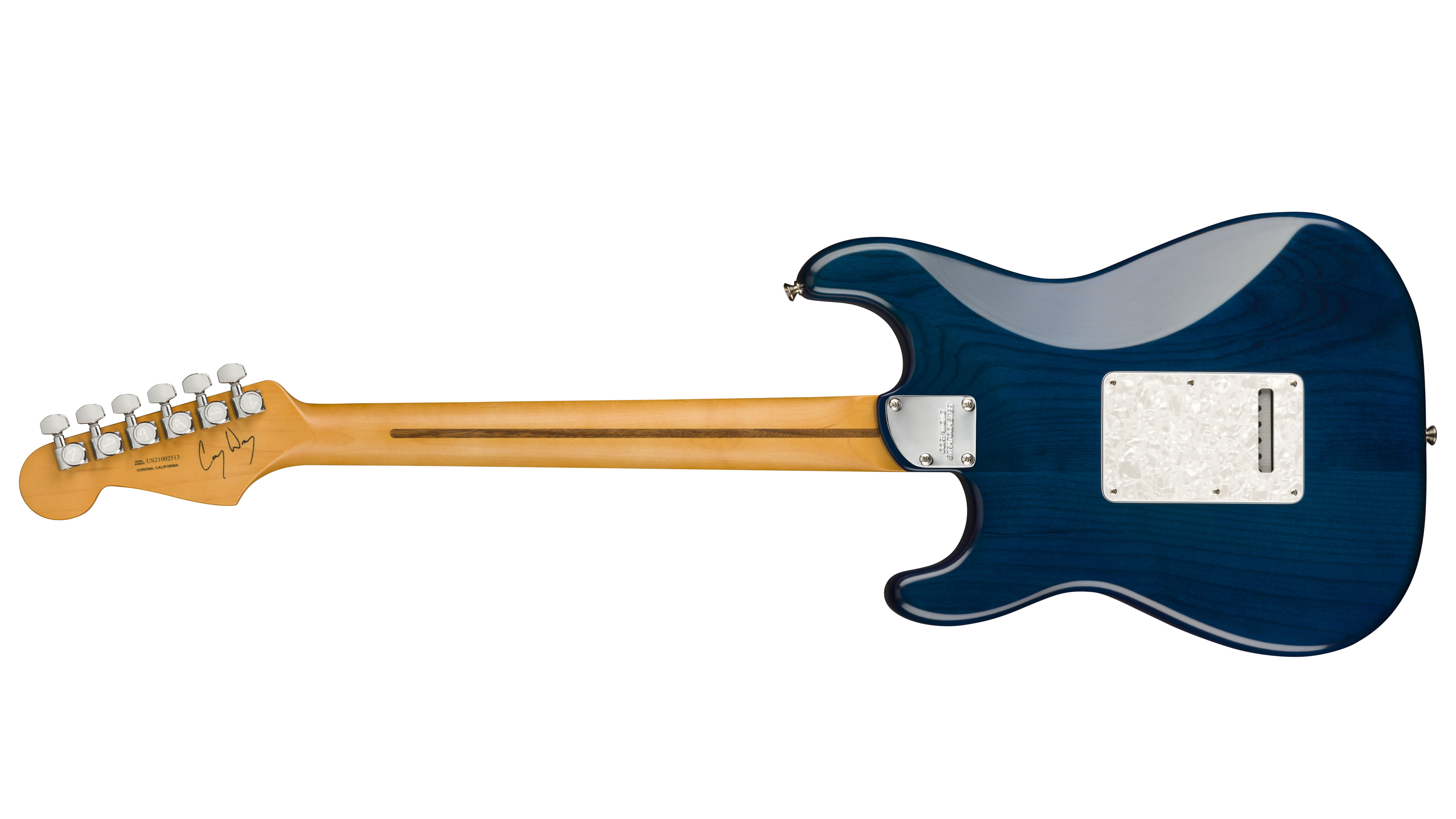
What does that do for the guitar?
“To me it’s just got a little bit of a different thing in how the transient response works from the initial attack, and you mentioned the Hitmaker, this is actually something really interesting; I was talking to some of the Fender techs and they were talking about Nile Rodgers’ guitar.
“Now, I am the consummate rhythm guitar player. Nile Rodgers, same sort of thing. I was talking to the Fender techs and the Fender team about building this guitar – ‘Okay, here’s what I’m thinking. I don’t know why but can we try this?’ They said, ‘You know what was really interesting? Your preferences, every preference that you have for the body of a Strat, is Nile Rodgers’ preferences. Now, neither one of you talked to one another about that; you both came to the conclusion independently.’“
With the rhythm thing I want absolutely purity, so I what I do is literally put a hair-tie around the spring, and all of a sudden it feels more like a hardtail Strat
Great minds think alike.
“I was talking to someone at Fender and I said, ‘Tell me about the Hitmaker. Tell me about the body. Tell me everything.’ They were saying that it’s the thinnest Stratocaster that’s gone to market – until mine. I think mine might be the same width as his.
“But his body shape is, again, one of those where it is a tiny bit smaller but you wouldn’t really notice. You wouldn’t look at it and think, ‘Oh, that’s a smaller body.’ The other thing is, he is a hardtail Strat guy and, for me, I like four springs in the back, but when you have four springs or five springs all of a sudden, with every spring that you add, you hear a bit of that sympathetic vibrations.
“When you hit a note it kind of lingers for just a little bit. And with the rhythm thing and the precise atta-koo-takka-koo-dakka I want absolutely purity, so I what I do is literally put a hair-tie around the spring, and all of a sudden it feels more like a hardtail Strat. It gives me the hardtail sound but the versatility of having a whammy bar, and the ability sound-wise to have the trem' bar“

We can’t help noticing that you have short hair. Somebody is going to be looking for that, late for a job interview looking for their hair tie and you’ve stolen it.
“[Laughs] That’s right! But it’s like all the bass players who put a piece of foam by the bridge and it does a little bit of muting. Now, that’s a little bit more extreme. This, it is literally just when you play this sort of attack; it just does a little something. To me, the way the wood is shaped and the rosewood fretboard affects the transient, the initial attack, but that hair-tie thing has more to do with right after the attack, how the sound is treated.
“To me, when I am thinking about rhythm, when I am thinking about hitting a note, there is the transient attack, the initial attack, and then there is the sustain, and then there’s the decay. Right? If you have got as synthesiser you can control those exact things but we don’t think about that sort of thing on the guitar as much just on its own.
“We have pedals. We have amps, and we think about attack, sustain, decay, release, all that sort of stuff, but there are actually physical things you can do on a guitar to shape those. For me, the attack comes from the smaller body shape. Again, I don’t know how to quantify it, I don’t know that Nile Rodgers does but, hey! We both came to the same conclusion.“
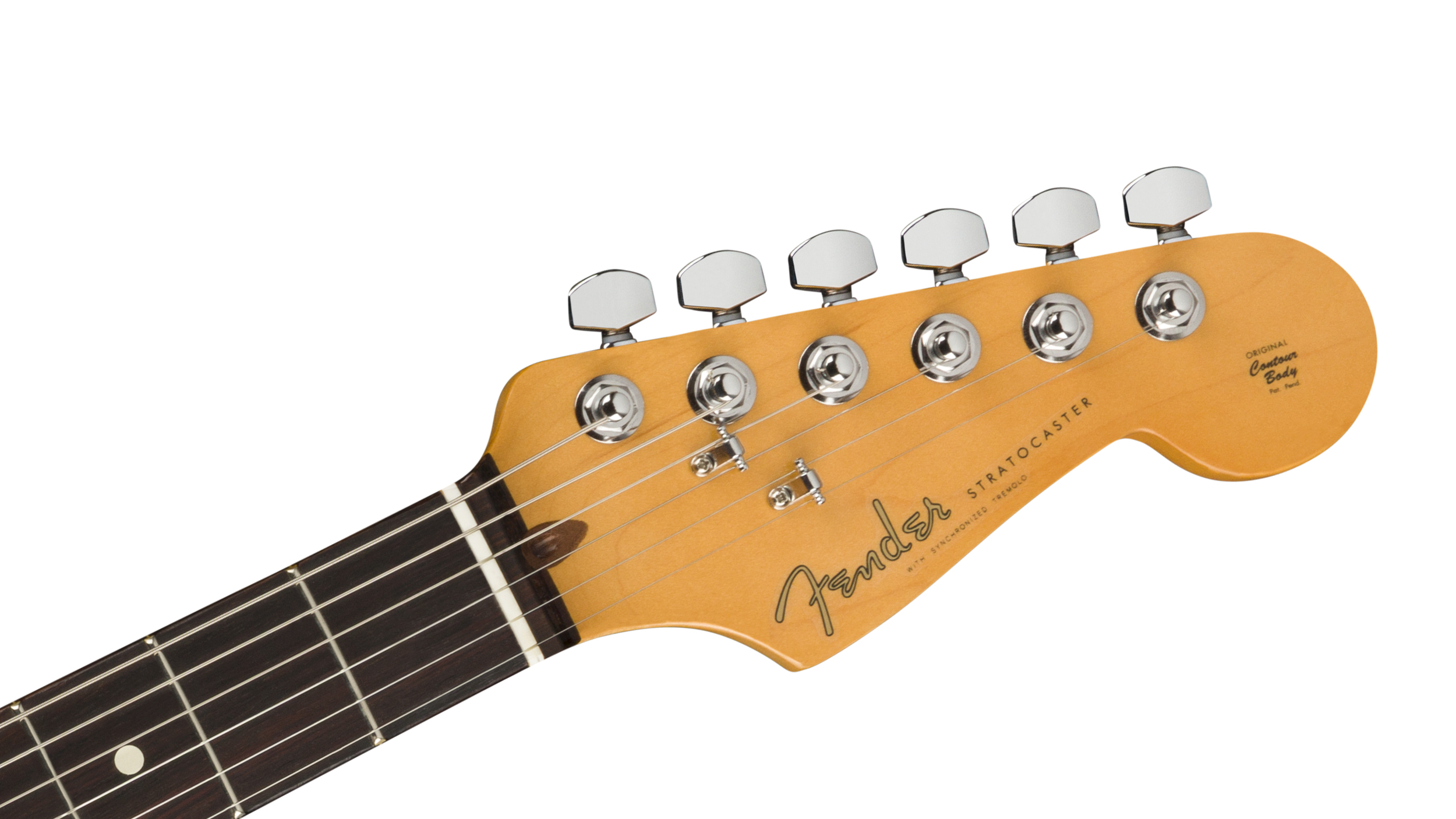
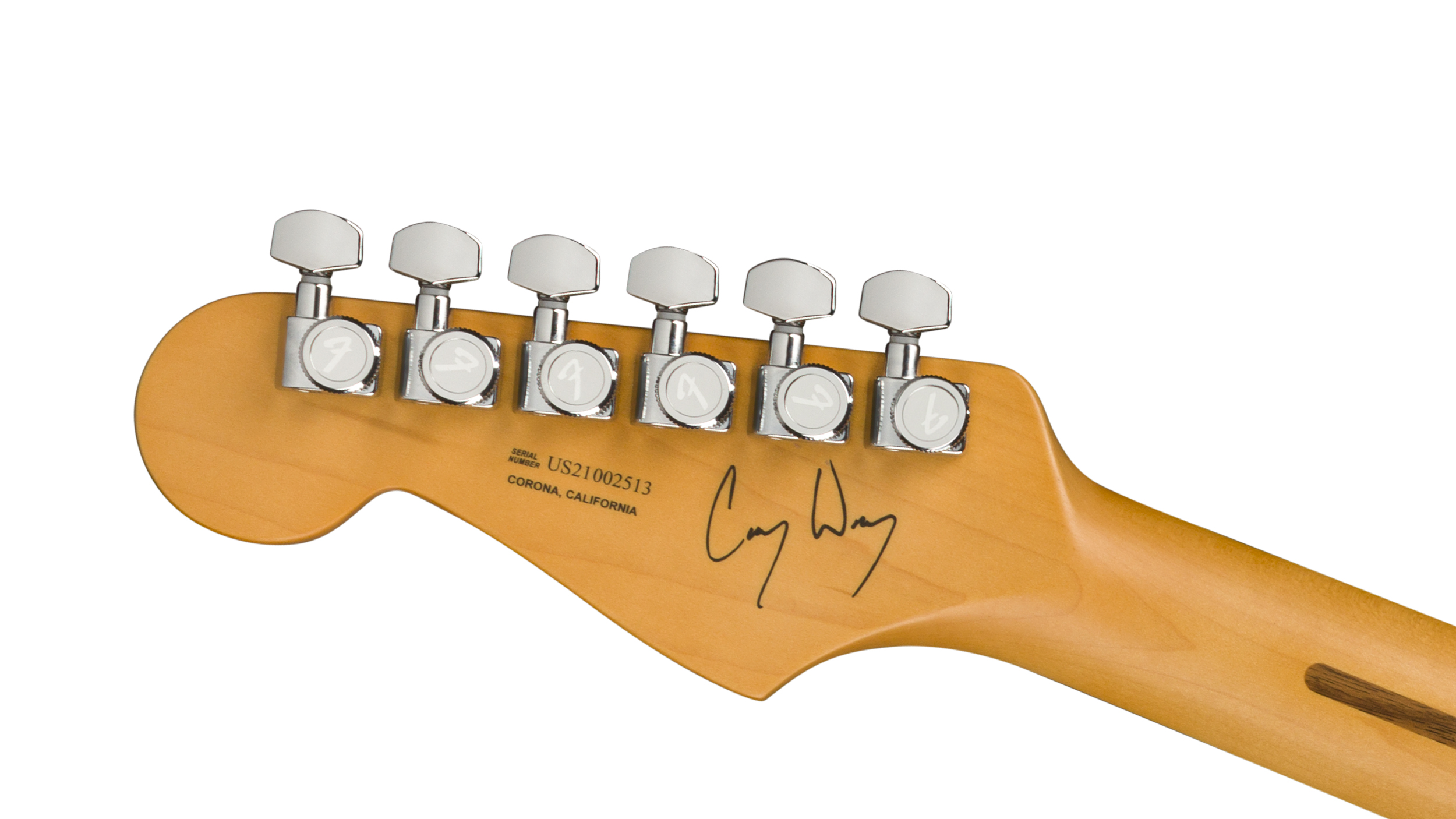
Rodgers' Hitmaker Strat has a maple fingerboard but you've gone for rosewood.
”If you are talking about the EQ of the attack, the rosewood fretboard, to me, I get the nice attack but the rosewood fretboard kind of rounds the top of the sound. It has a sharp attack. It has the immediate attack, because of the body shape, but the rosewood rounds it out.
I think that for a lot of modern pop music and funk music, RnB music, this is the perfect guitar
”I [also] get a little more sustain because the headstock is like two per cent bigger than the average Fender headstock, so there is a little more weight distribution. Now, it still feels like a regular Strat to most people, but it does have a tiny difference, and then the decay of the note comes from the the way that the springs and the hair-tie work together.
”I was really, really diligent about trying to get my sound more from this rather than from – and of course the pickups – using pedals, different amps. This sort of thing I can just plug it in. I think that for a lot of modern pop music and funk music, RnB music, this is the perfect guitar.”
Like you said about those transients, once you can hear them, you can never get them out of your head, you can never go back. You mention the pickups, your signature Seymour Duncan set, what makes them special?
“For a long time, what I have been using is the Seymour Duncan Antiquity Surfer pickups. Those pickups have an amazing clean tone, nice, round, vintage tone to them. But what I wanted to do was have something that also took overdrive. I wanted to be able to drive it a bit more. Sometimes the Antiquity pickups, once they start breaking up and once you start getting into overdrive, the sound has a little bit more of a wobble to it.
“I don’t know, I sound weird saying it. [Laughs] Again, I don’t know how to objectively quantify or how to say it. Whatever, the top end has like GRRRRRR! something happening. Anyway, I developed these pickups with Seymour Duncan and when I got the prototype for this guitar I tried a bunch of different pickups.
I was talking to someone at Fender and I said, ‘Tell me about the Hitmaker. Tell me about the body. Tell me everything’
“My signature Seymour Duncan Clean Machine pickups are kind of based on the Seymour Duncan Antiquity. They are similar but wound a little bit hotter, and the bridge pickup is a stacked humbucker.
“When I go from fourth position to second position, there is that obvious dip in the amount of body and fullness to it, and when you go to the bridge pickup, just a regular single-coil bridge pickup, it loses some of the body and it loses some of the meat of the sound. This, in a lot of cases, feels like a single-coil, because that is the sound, but I wanted it to have a little more fullness and a little more of an aggressive sound.”

It is a beautiful guitar. The finish looks spot on.
“Thank you. That finish is kind of an homage to my Highway One that I have been using for years, the one that I have had with me since I was a teenager. This guitar is very different. It is built very different.
“The things that are similar are the nitro-satin finish, the Sapphire Blue transparent paint job – you can kind of see the wood grain a little bit – and also the rosewood [fingerboard] and 22 frets. In some ways it kind of looks like my old Highway One guitar but it is very different, in the same way like a Toyota Camry might look similar to a Telsa Model S but they are completely different vehicles.”
Which one is your Hitmaker?
“This. My last couple of projects I have used this and everybody has been commenting on the tone, all the engineers. I have been blown away by this and have been putting it on a bunch of different records I have been playing on, and i have been using it live since I have started playing a little bit, and this is it. This is the one.”
Jonathan Horsley has been writing about guitars and guitar culture since 2005, playing them since 1990, and regularly contributes to MusicRadar, Total Guitar and Guitar World. He uses Jazz III nylon picks, 10s during the week, 9s at the weekend, and shamefully still struggles with rhythm figure one of Van Halen’s Panama.



